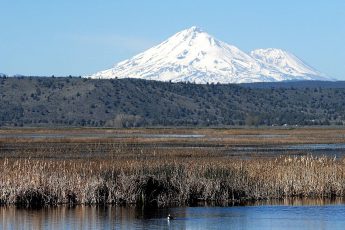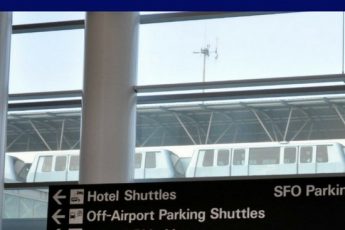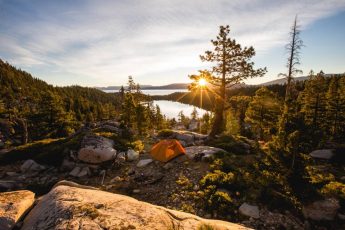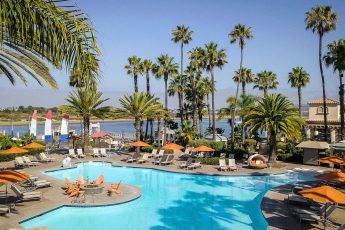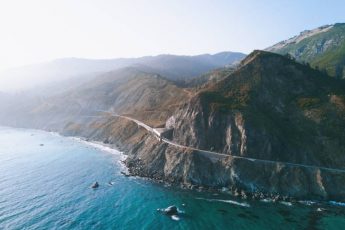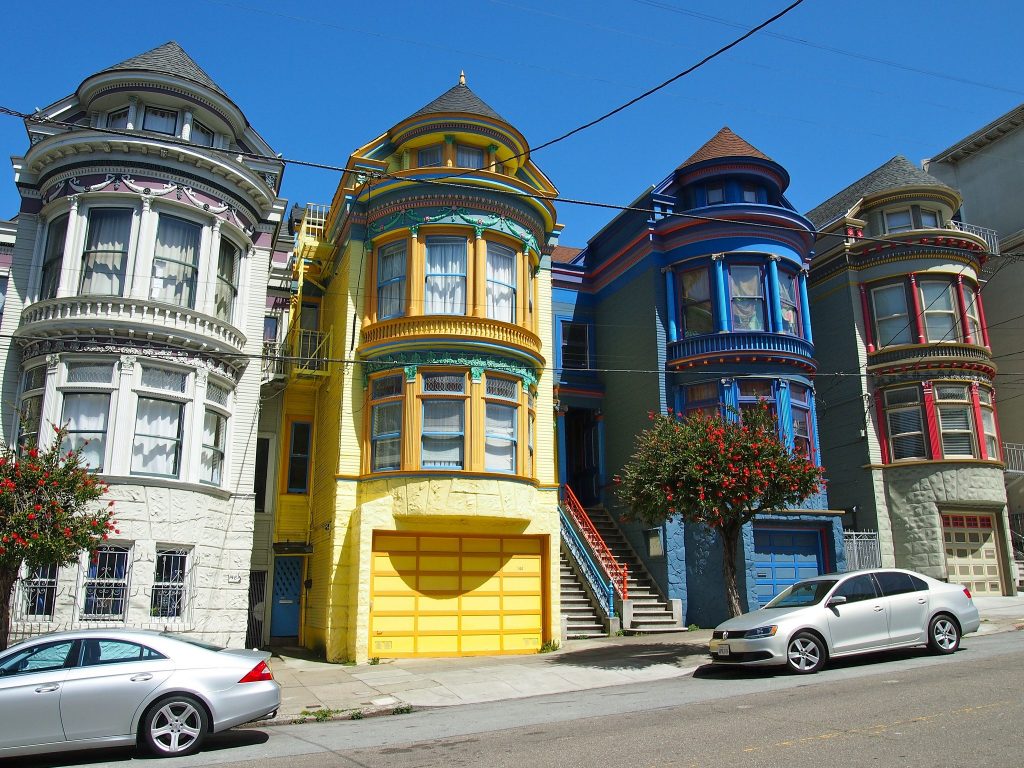
Of course, you’ll want to ride a cable car and view the Golden Gate Bridge when you visit the City by the Bay, but to learn why people keep leaving their hearts here, hit the hills and explore this multifaceted place.
For a city with such a big personality, San Francisco is surprisingly small. Bound on three sides by water, it measures only about seven miles by seven miles—you could easily walk across it in a day. And yet, upwards of 40 distinct neighborhoods cram into this relatively small space. (The secret? Those famous hills add much-needed surface area.)
The tech boom in Silicon Valley has reverberated up in the City by the Bay: Sleek high-rises have altered the skyline, swanky hotels are transforming formerly seedy areas, and everything from taxis to takeout has gone digital. These shifts present a challenge to a proudly free-thinking place with a long, quirky history. But San Francisco has always been a city of change with 250 years of practice blending history and tradition. From the docks of the San Francisco Bay in the east to the breakers along the city’s Pacific coast in the west, you’ll find Michelin-starred restaurants standing shoulder to shoulder with decades-old noodle shops and chic storefronts below elegant 1920s-era apartments. These are the neighborhoods where you’ll find the heart of San Francisco.
Downtown
San Francisco’s official downtown neighborhood is the Financial District, the busy business center. Here multistory offices and fast-casual restaurants crowd in around historic edifices such as the Flood Building, which survived the 1906 earthquake. But unofficially, “downtown” also includes the Embarcadero along the waterfront and Union Square—the central shopping district where you’ll find Neiman Marcus, the Apple Store, and designer boutiques along Maiden Lane. The Embarcadero is a main hub for public transportation, and most of the city’s hotels cluster here, so many visitors call it home base.
Rise above the commercial fray on a cable car—hop on at the base of Powell Street and ride to the top of Nob Hill. Here, take in the sweeping view of the city while surrounded by stately, early 20th-century grand dame hotels like the InterContinental Mark Hopkins and the Fairmont San Francisco as well as the French Gothic–style Grace Cathedral. Or grab the next cable car heading east on California Street and make your way down to the Ferry Building. More than a docking point for commuter ferries, the structure also houses an upscale market hall where you can shop for local, artisanal food and homegoods at Humphry Slocombe, Heath Ceramics, and more. In the evenings, discover intimate hole-in-the-wall sushi bars and French bistros along the narrow, hilly streets of downtown, or stroll the Embarcadero promenade in search of ritzier options—such as the Michelin-starred Angler—that look out at the Bay Bridge.
Chinatown and North Beach
Founded in 1853, San Francisco’s Chinatown is the country’s oldest. The strings of red lanterns, pagoda rooflines, and latticed woodwork make the neighborhood look a bit like a movie set, but if you stop by the Chinese Historical Society of America Museum, you’ll learn that the stylized architecture was a tactical addition to keep the area a haven for Chinese Americans when they faced displacement during the post-earthquake rebuilding efforts. Sure, souvenir shops are jammed around the ornate Grant Street Gate, but tucked in along alleyways and between sprawling Chinese groceries, you’ll also find tiny herbalist stores owned by the same families for generations, refined tea shops like Red Blossom Tea Company, and such buzzy restaurants as Michelin-starred Mister Jiu’s and China Live. Dim sum should be on your menu: Dim Sum Bistro and City View are reliable spots, but really, anywhere that looks crowded will likely be a winner.
Chinatown and North Beach are so close together, you might enter one before you realize you’ve left the other. In the early days of San Francisco, North Beach was the red-light district known as the Barbary Coast, and a few neon-accented holdouts still nod to that era. But later, it became a traditionally Italian neighborhood and old men still linger over newspapers and espressos at the many coffee houses, such as Caffe Trieste. The Beat poets flocked here in the 1950s and 1960s, and you can sip a cocktail at Vesuvio Cafe—the bar was one of Jack Kerouac’s haunts—and browse the shelves of City Lights Bookstore, founded by Lawrence Ferlinghetti. Today, North Beach is also a restaurant hot spot; waiters with Italian-accented English will coax passersby into the eateries along Columbus Avenue, but head for Washington Square further north, where you’ll find favorites like Tony’s Pizza and Sotto Mare.
Hayes Valley
As recently as the 1980s, Hayes Valley was considered a dangerous place to visit. But gentrification has swept through and now the main, wide, tree-lined streets of the sunny neighborhood are filled with high-end boutiques, clean Edwardian and Queen Anne townhouses, and chic wine bars, such as Fig & Thistle. It’s a lovely place to window shop. Find San Francisco–made knits at Marine Layer, rifle through local designers and antique jewelry at Reliquary, and browse minimalist essentials at Oak + Fort. At Fell and Franklin, a condemned building across the street from the SF Jazz Center has become an outdoor gallery, with portraits of jazz greats taken by photographer William P. Gottlieb filling the empty windows. Patricia’s Green, the tiny park at Hayes and Octavia, hosts temporary art installations. Head to the nearby cluster of shipping containers for a snack from Ritual Coffee Roasters or Smitten Ice Cream. In the summer, the area also hosts a pop-up outdoor movie theater.
The Davies Symphony Hall, the War Memorial Opera House, and the SF Jazz Center are all on the edge of Hayes Valley, so before showtime, fashionable patrons of the arts crowd the area’s best restaurants, such as Monsieur Benjamin, a modern French fine dining establishment. And while you’re exploring Hayes Valley, don’t miss a San Francisco icon, the Painted Ladies—a row of photogenic, ornate, colorful Victorian houses set against a panorama of downtown—just a short walk away at the edge of Alamo Square.
Castro
The epicenter of the LGBTQ rights movement in the 1970s, the Castro welcomes visitors with rainbow crosswalks and fluttering pride flags. The best way to enjoy this sunny neighborhood is by walking. Dive right in at Harvey Milk Plaza, the transit hub named after the first openly gay elected official in California. From there, head either south on Castro or northeast on Market to follow the Rainbow Honor Walk, an ongoing installation of bronze plaques (44 now, with an eventual total of 500) honoring notable individuals from the LGBTQ community from around the world, including James Baldwin, Keith Haring, Frida Kahlo, Sally Ride, and Freddy Mercury. Each plaque displays a portrait of the honoree, as well as biographical information and a description of the person’s impact.
Of course, remember to look up between plaque-readings: See what’s playing at the Castro Theater, the 1922 movie palace known for its classic film events and singalongs. Take in the pride-themed window displays at Cliff’s Variety or stop to shop at Sui Generis Designer Consignment. The GLBT Historical Society Museum and Archives offers a deeper look at 250 years of queer presence in the Bay Area. Hungry? Grab a cheeky sweet at Hot Cookie or a sundae at the old-fashioned Castro Fountain. Or raise a glass at legendary Twin Peaks Tavern or Moby Dick, one of the gayborhood’s favorite bars.
The Castro is also within walking distance of several parks. Stroll over to Duboce Park to watch dogs and their humans frolic, make the hike to Corona Heights Park for scenic views of the city, or head to Dolores Park and the taquerias of the Mission neighborhood beyond.
Haight Ashbury
In the late 1950s, the Haight Ashbury neighborhood in the center of San Francisco was a shadow of its current, vibrant self. Its magnificent Victorians had become shabby in the postwar years, and many were converted to cheap boarding houses that sheltered the bohemian types who were flocking to the city. Their shared liberal values and free-love ideals soon crystallized into a full-blown cultural movement that peaked in the 1967 “Summer of Love,” during which large gatherings of hippies broadcasted their message of peace to the nation.
Today, the Haight’s Victorian houses have been lovingly restored and the neighborhood has been polished. Vestiges of the counterculture Summer of Love linger though, such as the Haight Ashbury Free Clinic, which opened in 1967, and a persistent population of homeless hippies. Shop your way through outlandish tie-dye emporiums like Love on Haight, well-established vintage and thrift stores including Wasteland and Held Over, and high-priced sneaker boutiques. In the cavernous Amoeba Music, thumb through vintage vinyl from classic rock groups that played and stayed in this neighborhood, including the Grateful Dead and Jimi Hendrix. If you get hungry, grab a brew and a fancy bar snack like bacon-wrapped dates at Magnolia Brewing Company, or opt for a classy cocktail at the Alembic.
The Haight is bordered on the north by the Panhandle, a multi-block park popular with joggers, but it’s not the best spot to sprawl out. Instead, head west into Golden Gate Park; the Music Concourse, where you’ll find the de Young Museum and the California Academy of Sciences and plenty of grassy areas, is only a 20-minute walk from the edge of the Haight.
The Sunset
On the far western edge of the city, the Sunset neighborhood has always felt far away. In the 19th century, it was just a swath of sand dunes that San Franciscans referred to as “Outside Lands.” Even today you’ll have to brave an hour-long Muni light-rail ride on the N line or a 30-minute drive to reach this laid-back beach town blissfully removed from the hustle and bustle. Here, wetsuited surfers jog barefoot to the ocean, skateboarders carve lazily down the gently sloping streets, and neighbors gather to catch up outside small, locally owned restaurants, coffee shops, and taprooms.
It’s a notoriously foggy area, but even if the skies aren’t clear, it’s a glorious place to spend a few hours. Grab a gibraltar (a San Francisco spin on a cappuccino) from Andytown or Trouble; wander quiet streets lined with colorful bungalows, and stop in at surf shops, bookstores, and showrooms, like 3 Fish Studios or Woodshop. Dig into easy beach fare at Hook Fish Co., Devil’s Teeth Bakery, or Java Beach Cafe or put your name down at Outerlands, an upscale, destination brunch and dinner spot. Sunny or overcast, no day in the Sunset is complete without a walk along the beach.

